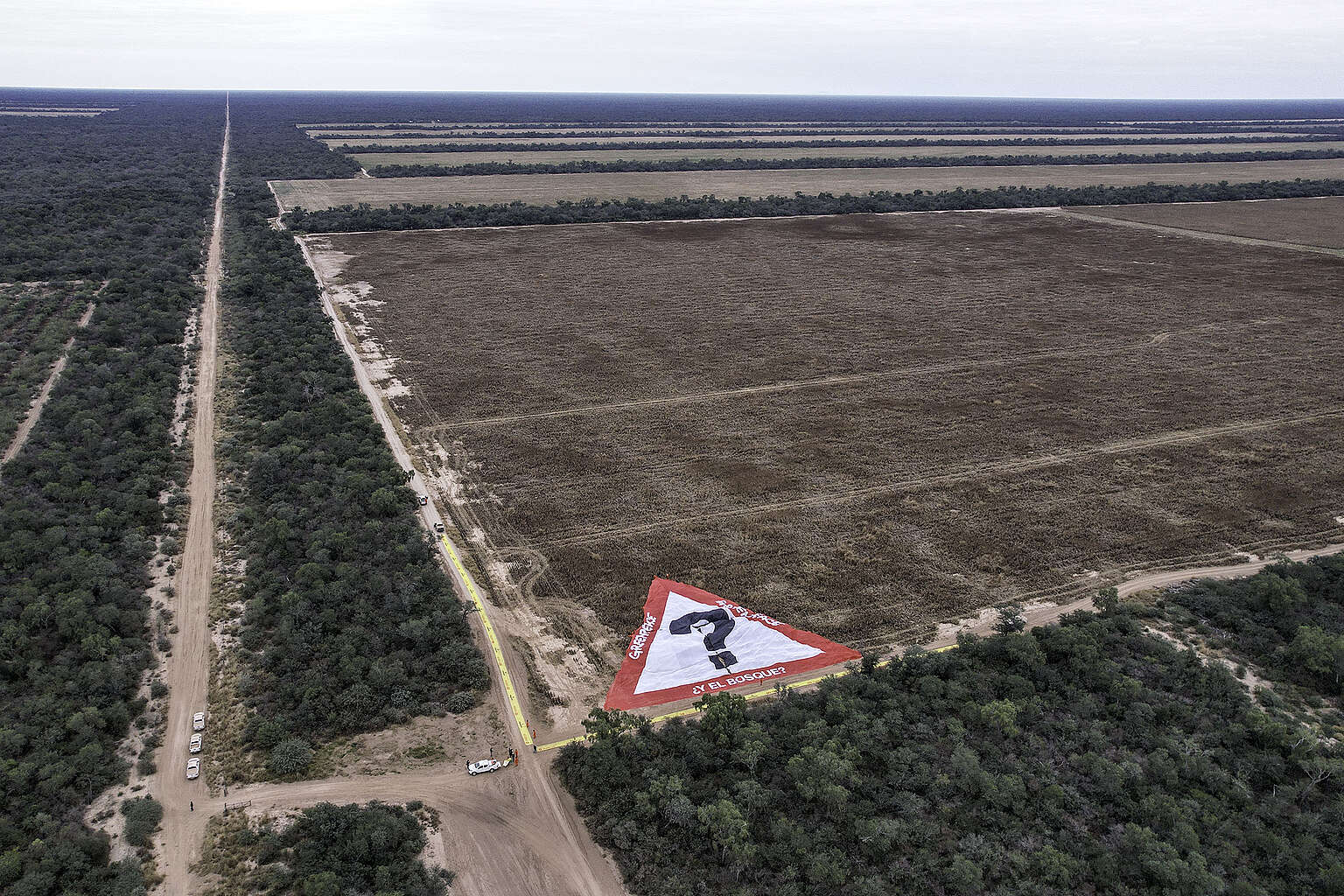
Illegal clearing in Argentina
The most serious situation occurs in the provinces of Chaco and Santiago del Estero, according to a new Greenpeace report
In a recently released report, Greenpeace said that it detected through the use of satellite images that during the first half of the year 51,600 hectares of northern Argentina were deforested, 25 percent more than in the same period in 2022. The northern provinces, Chaco, Santiago del Estero, Formosa and Salta register the largest deforested area in the country. "We must move forward in penalizing illegal clearing," says Hernán Giardiani.
The environmental organization Greenpeace denounced an increase in the deforested area in Argentina during the first half of this year, mainly due to illegal clearing.
“It was detected that during the first half of the year in the north of the country 51,600 hectares were deforested, 25% more than in the same period of 2022 (41,332 hectares). The most serious situation occurs in Chaco and Santiago del Estero, where most clearing is illegal”; indicated in the report released on Thursday, July 27 by the international environmental NGO.
The increase in deforestation is worrisome and, above all, that most of it is illegal. In Santiago del Estero, the government violates the National Forest Law by authorizing clearing for livestock in areas where it is not allowed. While in Chaco the provincial justice suspended the clearing at the end of 2020, but the bulldozers are advancing more and more. The government controls little and it is evident that the fines are not enough to end this ecocide. Penalizing illegal clearing seems the only solution”, stated Hernán Giardini, coordinator of Greenpeace's Forests campaign.
The survey of the environmental organization, carried out by comparing satellite images, estimates that between January and June 2023 deforestation in Chaco reached 24,522 hectares; in Santiago del Estero 19,040 hectares; in Formosa 5,804 hectares; and in Salta 2,234 hectares; totaling 51,600 hectares.
The increase in deforestation is "worrying and, above all, that most of it is illegal," says Giardini.
“In Santiago del Estero, the Government violates the National Forest Law by authorizing clearing for livestock where it is not allowed. While in Chaco the provincial Justice suspended the clearing at the end of 2020, but the bulldozers are advancing more and more. The Government controls little and it is evident that the fines are not enough to put an end to this ecocide. Penalizing illegal clearing seems the only solution”, he stated.
According to the environmental organization, the main cause of forest loss is the advance of the agricultural frontier for livestock and soybean cultivation, which Argentina exports to Asia and Europe to a large extent.
This phenomenon occurs above all in the Gran Chaco region, the second largest forest ecosystem in America.
Deforestation causes the disappearance of species, climate change, floods, droughts, desertification, diseases, evictions of indigenous people and peasants, loss of food, medicine and wood. We are facing an obvious climate and biodiversity emergency that forces us to act accordingly. It is time to end impunity,” Giardini said.
In this context, Greenpeace promotes a popular consultation in Argentina on the criminalization of the illegal destruction of native forests that will be open to participation until October 10 and whose results will be presented in the Argentine Parliament.

IT MAY INTEREST YOU
 The second largest wetland in South America is located in Argentina: what is it?
The second largest wetland in South America is located in Argentina: what is it?
Argentina has national parks that place it in a unique position within South America, competing with 300 others. Which is the largest? South America is home to more than 300 national parks, but many go unnoticed. There are extensive wetlands that have been the subject of major ecological restoration projects, to coastal mountains with deep indigenous heritage. Today we tell you the case of one located in Argentina.
 Missions | New illegal felling in the Piņalito Provincial Park in San Pedro reveals the silent expansion of deforestation in protected areas
Missions | New illegal felling in the Piņalito Provincial Park in San Pedro reveals the silent expansion of deforestation in protected areas
The advance of deforestation on protected areas was once again evident this week in the Piņalito Sur Provincial Park, in San Pedro, where the Ministry of Ecology and Renewable Natural Resources confirmed a new case of selective illegal logging. The event occurs in a context of growing concern about the fragility of the environmental control system in rural and border areas, where the scarcity of resources, personnel and logistics limits the capacity of surveillance against criminal organizations organized to steal native woods and market them on the black market in connivance with sawmill owners.
 They promote research in pine resins from the NEA
They promote research in pine resins from the NEA
The forestry industry is one of the most important sectors in the economies of Misiones and Corrientes. Thousands of hectares of pine supply the paper, pulp, boards and sawmill industry. Pinus elliottii, one of the species established in the region, in addition to providing wood, is used to produce resin, a non-wood forest product with high demand in the chemical, pharmaceutical and cosmetic industries. In 2\024, resin extraction of approximately 52,6\0\0 tons was achieved from approximately 18,\0\0\0,\0\0\0 trees in production, generating income and jobs with high expansion potential.





















